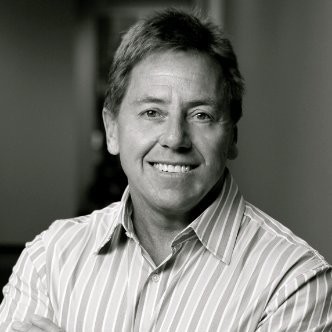Business Model Innovation in Digital Health: Bob Allison, Co-Founder of PEAR Health Labs (Part 1)

Bob has a background in semiconductors where the key business model for selling chips is getting them into design wins. In PEAR, Bob has parlayed this model into a platform business catering to many top brands who bring Digital Health products to market on their platform.
There is a lot to learn for entrepreneurs from this case study about a unique and relevant go-to-market strategy, as software eats the world, and ALL companies have to now become tech companies.
Sramana Mitra: Let’s start at the very beginning of your journey. Where are you from? Where were you born and raised? What kind of background?
Bob Allison: I was born and raised in Arkansas. I grew up on a rural family farm where we have beans, cotton, corn, and rice. I grew up there and moved to California. I was raised by my grandparents and reunited with my mom at 13 in California. That’s what brought me out to California.
Sramana Mitra: Where in California?
Bob Allison: We lived in the San Fernando Valley in southern California.
Sramana Mitra: What about education?
Bob Allison: I got a degree from California State University in business in 1981.
Sramana Mitra: What happens after that?
Bob Allison: During college, I was recruited into this new emerging industry which was in the semiconductor distribution side of the business. I went to work as a technical product person for the Motorola product lines back in 1979. I spent the next 17 years in the semiconductor distribution business.
Sramana Mitra: In other places as well?
Bob Allison: We had multiple lines. I was the founder of a company called Insight Electronics, which was the first real technical distributor focused on mostly hiring field application engineers to help emerging technology companies understand the use of programmable logic arrays. That was a technical company. Insight was acquired by a European company called Mimic.
Sramana Mitra: When did you start it? How long did it go? Was it bootstrapped?
Bob Allison: In 1984, the Japanese product lines and the American product lines were no longer available to share the shelves. There was a rift between the Japanese semiconductor manufacturers and the Americans. I was working as a General Manager in a distribution company. The Japanese approached me and asked me to start a company. They would give me some franchises to do that.
I started the company completely bootstrapped. I took the $100,000 that I had saved. At that time, I had two kids. I started Insight directly from that. That grew rapidly. We grew from a startup in one location. By 1990 when we were acquired, we were in 13 locations with a couple of hundred million in revenue by then.
Sramana Mitra: All selling the Japanese chips?
Bob Allison: That was the start, then we pivoted to leading-edge programmable products. There was a niche in that. The other claim to fame was, we were the first guys to use a single location rather than having inventory distributed all over. We were using a single warehouse location, allowing us to invest all of our overhead into field applications and technical people out in the marketplace rather than in physical distribution facilities.
Sramana Mitra: Who were the big programmable players? Cylink was still new at this time.
Bob Allison: There was MMI, which was the lead along with Lattice. We ended up with all of the emerging brands through the 80s. Most of that was when the market exploded around programmable devices and fully-integrated microcomputing devices in general. We were a good shop for the western half of the United States to go and use as part of that. We had one or two competitors in the marketplace who were doing something similar but in different regions.
This segment is part 1 in the series : Business Model Innovation in Digital Health: Bob Allison, Co-Founder of PEAR Health Labs
1 2 3 4 5 6 7
Featured Videos
Can 1M/1M Help Me Raise Money?
How Does 1M/1M Democratize Entrepreneurship Education?
How Does 1M/1M Democratize Management Consulting?
When Is The Right Time To Join 1M/1M?
Can 1M/1M Help Me With Business Development?
Can 1M/1M Help Me With Market Sizing?
Can 1M/1M Help Me Validate My Product?
Will I Have Private 1-on-1 Sessions In 1M/1M?
How Does 1M/1M Help Entrepreneurs Connect With Silicon Valley?
Mentoring or Consulting?
Why Does 1M/1M Charge $1000 a Year?
Why Does 1M/1M Partner With Local Organizations?
Why Don\’t Mentoring Networks Work?
Why Is It Important To Study With 1M/1M Now?
Dan Stewart Story
Vikrant Mathur Story
